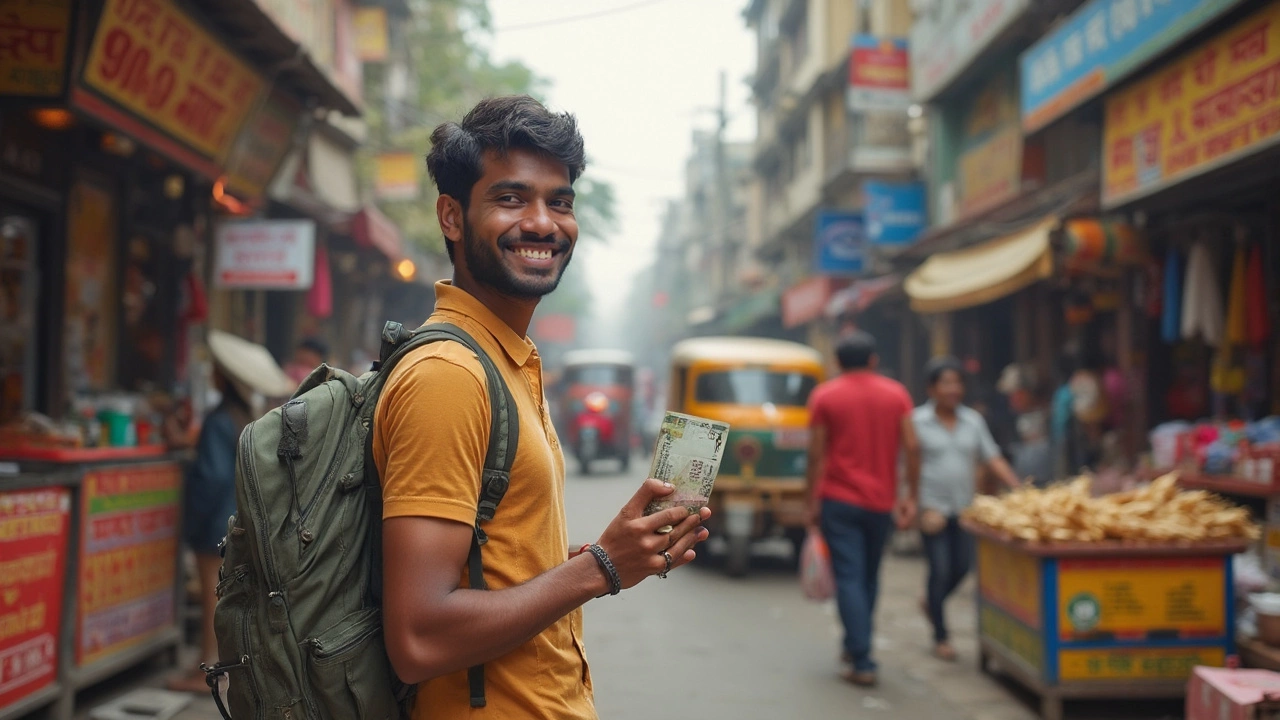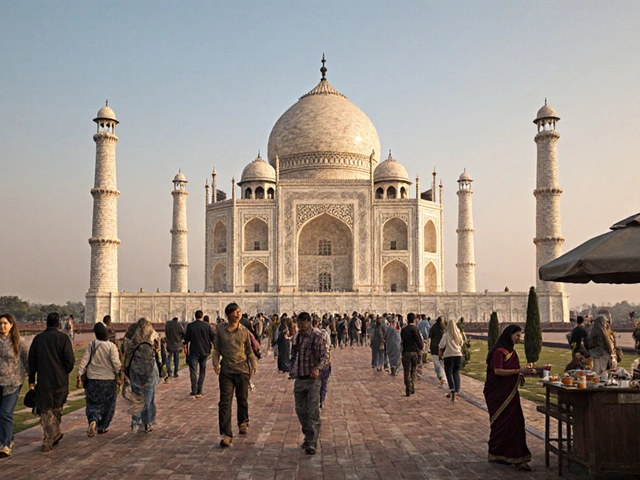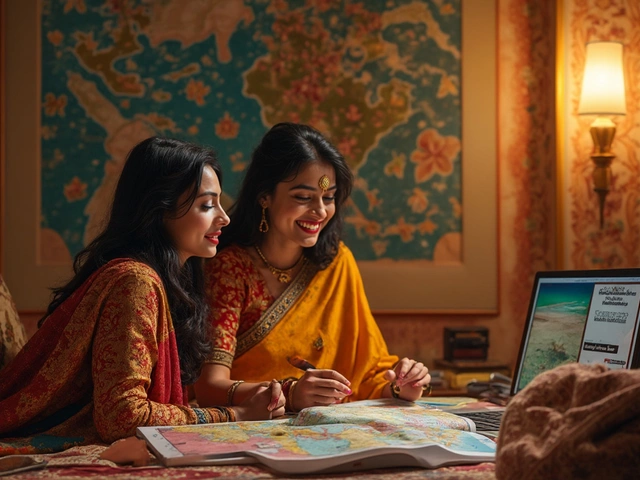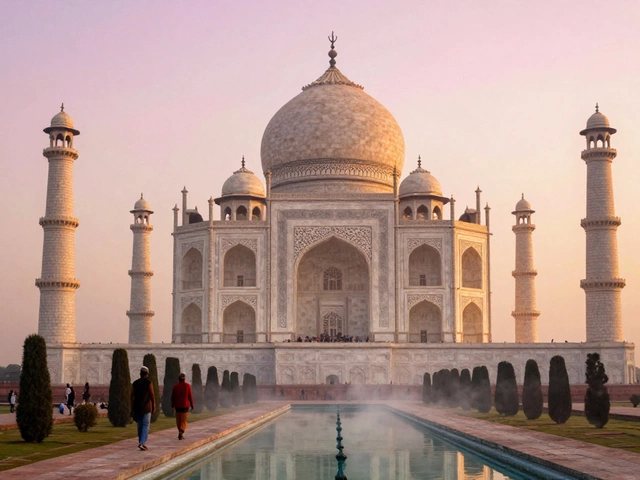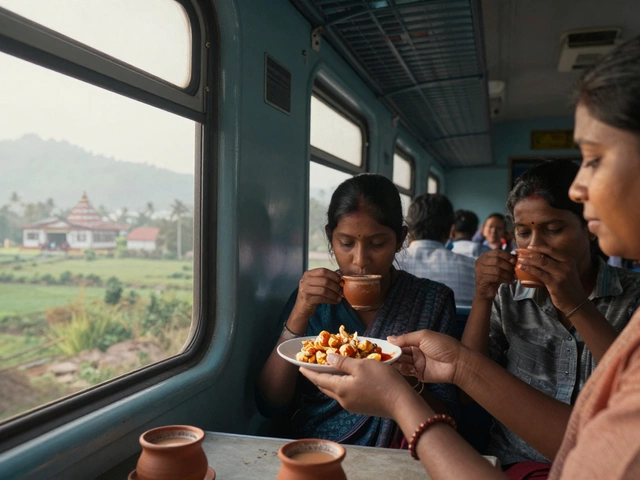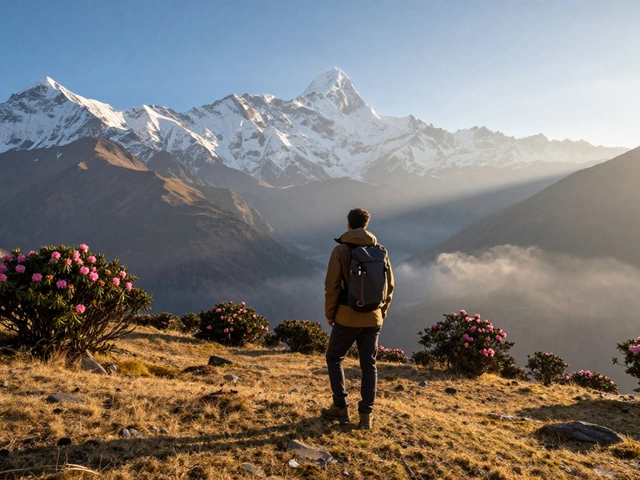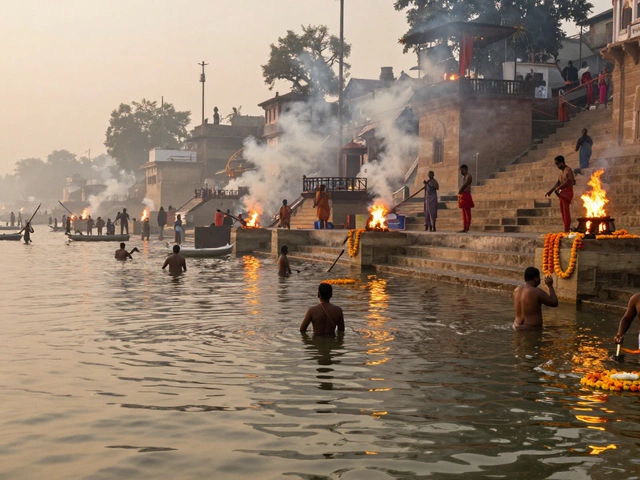Ever wondered if 500 rupees will get you anywhere in India? You’re not alone. Travelers always ask if that bill in their hand is small change or real spending power. The answer is: it totally depends on where you are and how you spend.
India’s prices swing wildly based on the city, the neighborhood, and even your timing. In some places, 500 rupees feels like pocket change—think a coffee and a muffin at a trendy Delhi café. In others, it’ll cover an entire day’s food, a rickshaw ride, and even a hostel bed.
Before stuffing your wallet, it’s smart to know what daily things cost. A 500-rupee note is just about $6 in today’s exchange (June 2025). That might not scream luxury, but in many spots across India, it’s a mini-jackpot for budget travelers. Food, transport, and cheap stays can all fit in that little note if you play your cards right. Want your money to last? It’s all about local choices.
- What Does 500 Rupees Really Mean?
- What You Can Buy and Do for 500 Rupees
- City vs. Small Town: Is There a Big Difference?
- Typical Travel Expenses: Breaking It Down
- Smart Spending Tips for Stretching Your Rupees
- Mistakes to Avoid When Traveling on a Budget
What Does 500 Rupees Really Mean?
Picture this: in India, 500 rupees isn’t a fortune, but it’s not just spare change either. As of June 2025, that’s about 6 US dollars, but what you get for it can be wildly different depending on where you are. In the heart of Mumbai or Delhi, 500 rupees might only buy you a basic lunch and maybe a quick metro ride. Scoot over to a small town or rural area, though, and you could have enough for a night’s simple lodging, three solid meals, plus transportation by auto-rickshaw.
India’s diversity is legendary, and that totally shows up in its prices. Here’s a quick comparison for travelers:
- 500 rupees gets you a chai and snacks for four at a roadside tea stall in most cities.
- In a budget hotel, it might pay for one night in a bunk bed dorm.
- You can grab a train ticket for a three-hour ride in a non-AC chair car in many regions.
- It’ll feed you street food all day if you love dosas, samosas, and thalis in towns like Varanasi or Jaipur.
While 500 rupees feels less in upscale neighborhoods or big malls, step outside to markets or local joints and your buying power jumps. The basics—food, local transport, and low-key attractions—usually offer the best value for travelers. So, before you make any plans, check a few prices in local currency on Google Maps or food apps. Trust me, with just a little research, you’ll squeeze the most out of your rupees each day.
What You Can Buy and Do for 500 Rupees
Travelers are always searching for the best ways to make their money last, so here’s what you can really expect for 500 rupees. This is your go-to number for figuring out how much ground you can cover without breaking the bank. Don’t trust rumors—let’s look at numbers, not guesses.
“If you’re sticking to local eats and public transport, 500 rupees can easily cover food, a short ride, and some sightseeing in most Indian cities,” says Arjun Mehta, editor at India Budget Travel Guides.
Here are real things you can buy or do across India—prices checked in 2025:
- Street food spree: Fill up on chaat, samosas, dosas, or even grab a thali meal for under 100 rupees each. With 500, you could try five different snacks in a day, or eat simply all day long, especially outside of big cities.
- Bus and metro rides: An ordinary bus ride? 10–30 rupees. Delhi Metro or Mumbai local trains? Usually 10–60 rupees, more for longer trips. Cover your local transport for a whole day, no sweat.
- Budget hostel dorm: In many towns, a dorm bed in a no-frills hostel is 300–500 rupees. In tourist hotspots and big cities, you might need to stretch it a bit, but in rural or less touristy spots, you’ll even have change for chai.
- Entry to popular sights: Many museums, forts, and temples charge 30–250 rupees for Indian visitors. Foreigners pay more, but 500 rupees is enough for two or three spots if you pick local rates or smaller attractions.
- Bottle of water plus SIM top-up: A 1-liter bottle is 20–30 rupees, and a basic talk/data top-up can still be found for 100–150 rupees in many shops.
Here’s a sample daily breakdown (actual prices vary by city):
| Item | Cost (INR) |
|---|---|
| 2 local bus rides | 40 |
| Street breakfast | 40 |
| Hostel dorm bed | 350 |
| Cheap lunch thali | 70 |
| Entry to monument | 50 |
| Bottle of water | 30 |
| Total | 580 (can be squeezed to fit 500 with small changes) |
If you travel smart, spend local, and skip fancy coffee shops or taxis, 500 rupees goes way further in India than you’d think. The trick? Go where locals go, and price-check before you buy. You never know, that 500 might even cover your day with enough left over for Bentley’s favorite—an extra samosa for you.
City vs. Small Town: Is There a Big Difference?
If you’re looking to make your money stretch, where you spend it in India can totally change the game. Let’s compare how far 500 rupees really goes in busy cities versus laid-back small towns—because the gap is bigger than most travelers think.
Start with cities like Mumbai, Delhi, or Bengaluru. A cup of coffee at a major cafe chains costs between 180 and 250 rupees. A ride in an app cab, even for short distances, can eat up 150 to 300 rupees. Shared hostels start around 400 rupees per night if you hunt for deals. If you’re hungry for a quick meal, expect to pay 120-250 rupees at local eateries, but a restaurant chain meal can shoot up to 400 easily. Suddenly, that 500 rupees (which is the main 500 rupees you’re counting on) is nearly gone after just coffee and breakfast.
Now flip the script and head to a small city or rural town. Think Varkala, Hampi, or local towns in Himachal Pradesh. A decent chai is 20 rupees, thali (full meal with rice, chapati, veggies, and dal) is as low as 60-100 rupees, and a basic guesthouse single room? Around 250-350 rupees. Autos and local buses rarely go past 30-60 rupees for most rides. In these places, you’ll have change left over at the end of the day and might even treat yourself to some street snacks.
Two travelers I met last summer tracked every expense: in Jaipur, they needed about 1200 rupees per day each for a decent stay with food and rides. In Pushkar, that dropped to under 700, even with a sunset camel ride thrown in. Cities mean bigger costs for nearly everything—sometimes double or triple. If you’re counting rupees, pick smaller spots, dig into local markets, and skip the fancy chains. That’s how you stretch every bill.
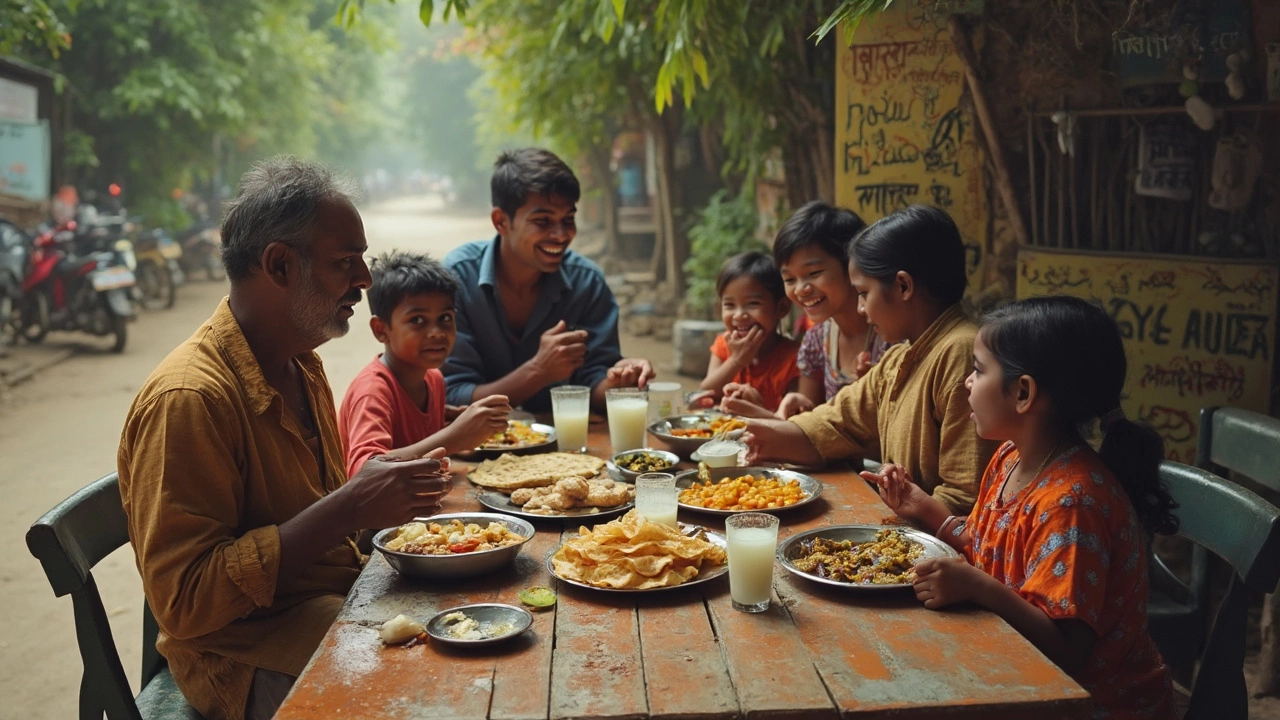
Typical Travel Expenses: Breaking It Down
Traveling in India on a tight budget? Knowing the usual costs makes all the difference. Let’s get real about where your 500 rupees goes. From bus tickets to meals and even small splurges, here’s what you can expect to pay in most cities and towns.
| Item/Service | Average Cost (in rupees) |
|---|---|
| Budget meal (local eatery) | 100-200 |
| Bottle of water (1L) | 20-25 |
| Street food snack | 30-60 |
| Auto-rickshaw ride (short distance, 2-4 km) | 50-100 |
| City bus fare | 10-35 |
| Basic hostel dorm bed (non-metro areas) | 250-400 |
| Cup of chai (roadside) | 10-15 |
Let's break this down with a real day: Say breakfast is a dosa with chai (about 50 rupees), you hit a local bus (20 rupees), have a big thali for lunch (150 rupees), maybe a street snack in the evening (40 rupees), and take two short auto rides (around 150 rupees total). Add it up, and you’ve still got a bit left to spare, even after a super basic hostel bed.
Of course, prices in top tourist zones like Mumbai, Delhi, or Goa will nudge higher. But if you’re traveling in smaller cities or hill towns, you’ll get way more bang for your buck. Your daily spend can easily sit under 500 rupees if you skip air-conditioned restaurants and fancy cafés.
- Always check hostel reviews for hidden charges—some places tack on extra for sheets or Wi-Fi.
- Drink filtered water where possible instead of buying bottles. It’s cheaper and better for the planet.
- Local buses and shared rickshaws cost way less than taxis or app rides.
Bottom line: With some local know-how, you can stretch that 500-rupee note further than you’d think, covering all the basics for a day out exploring.
Smart Spending Tips for Stretching Your Rupees
If you really want your 500 rupees to last, you have to think like a local, not a tourist. The 500 rupees strategy only works when you make smart choices every step of the way. Here’s how:
- Stick to local restaurants and street food stalls. A thali or hearty meal can cost just 80–120 rupees, while tourist spots sometimes charge triple for the same thing.
- Use public transport like local buses or shared rickshaws. In big cities, a metro ride can be as low as 10–50 rupees compared to a 300-rupee taxi.
- Stay at hostels or budget guesthouses. Many places, especially outside major metros, offer beds for 200–400 rupees a night if you book directly instead of online.
- Buy bottled water in 2-liter packs rather than small bottles. It’s cheaper and lasts longer.
- Bargain whenever possible in markets, but do it with respect. Even small savings add up if you’re watching your cash.
- Always check prices on popular apps like Zomato or Swiggy before eating out. Sometimes there are deals just for ordering through the app, not in person.
Let’s look at some real 2025 prices from around India to see just how far 500 rupees can get you in a day:
| Expense | Average Cost (INR) | Notes |
|---|---|---|
| Breakfast (local café) | 60 | Masala dosa with tea |
| Metro ticket (one-way) | 30 | Delhi or Bangalore |
| Lunch (street food) | 100 | Veg thali or biryani |
| Bottled water (2L) | 40 | Cheaper at small shops |
| Budget hostel bed | 300 | Shared dorm in a smaller city |
Add it up, and you’re right at the 500-rupee mark—with a good meal, safe water, a roof over your head, and even a little room for quick transport. If you skip the hostel or split a room with friends, you’ll save even more.
One last tip: Carry some small bills and coins. Many spots—especially roadside vendors or transport—can’t break a big note. And if you ever get stuck, ask a local for advice. Most people are happy to point you to a good deal or warn you about tourist traps.
Mistakes to Avoid When Traveling on a Budget
Even when you’re careful, it’s easy to let your money slip away fast in India. Most of us blow through our daily limit before realizing it—often on stuff that’s easy to avoid. Trust me, a little planning helps you stretch every 500 rupees note farther.
- Paying tourist prices without checking local rates: Don’t grab the first thing you see, whether it’s a tuk-tuk ride or a bottle of water. The "tourist rate" can be double or even triple. Always ask locals or check apps like Ola, Swiggy, or Rapido to see what things should really cost.
- Skipping street food because of hygiene fears: Legit, street food is often safe (and super cheap!), especially at busy stalls. Worrying too much means you end up paying triple at restaurants that aren’t always better. Local favorites like vada pav or samosas rarely cost more than 30 rupees.
- Not booking transport in advance: Last-minute tickets can wreck your budget. Booking trains on IRCTC or buses on RedBus saves both money and the headache of price spikes. Even shared cabs and rickshaws are cheaper if you plan and travel off-peak hours.
- Ignoring small expenses: It’s not the headline costs that sink you. Frequent bottled water, random snacks, and convenience fees add up quickly. Refill a bottle at your hostel or at train stations—you pay as little as 5 rupees instead of 40 for bottled water each time.
- Forgetting about hidden fees and taxes: Some hostels and attractions tack on extra service charges. Always ask if taxes are included before paying, and check your restaurant bill. Airports, especially, hit hard with high food and drink prices.
Here’s a quick look at common budget-breaking traps and how much they can cost you per day:
| Mistake | Avg. Extra Cost/Day (Rupees) |
|---|---|
| Overpriced taxi fare | 150-300 |
| Bottled water instead of refilling | 40-80 |
| Not asking about taxes/fees | 50-100 |
| Eating only at tourist restaurants | 200-400 |
| Late booking of transport | 100-250 |
So, if you want your money to go further, stay alert to the little things. A few smart moves each day make sure you’re having real adventures—without watching your wallet empty before you even get to dessert.
